DWELL BEYOND THE ORDINARY
How to winterize a park model home: 35 tips
You may love winter, or you may strongly dislike the cold. But either way, your park model must be winterized in order to preserve its quality and life-span. In this article, we make the whole process simple, explaining how to winterize a park model home step-by-step. You can also take a look at our table of contents, to find an answer to your specific questions
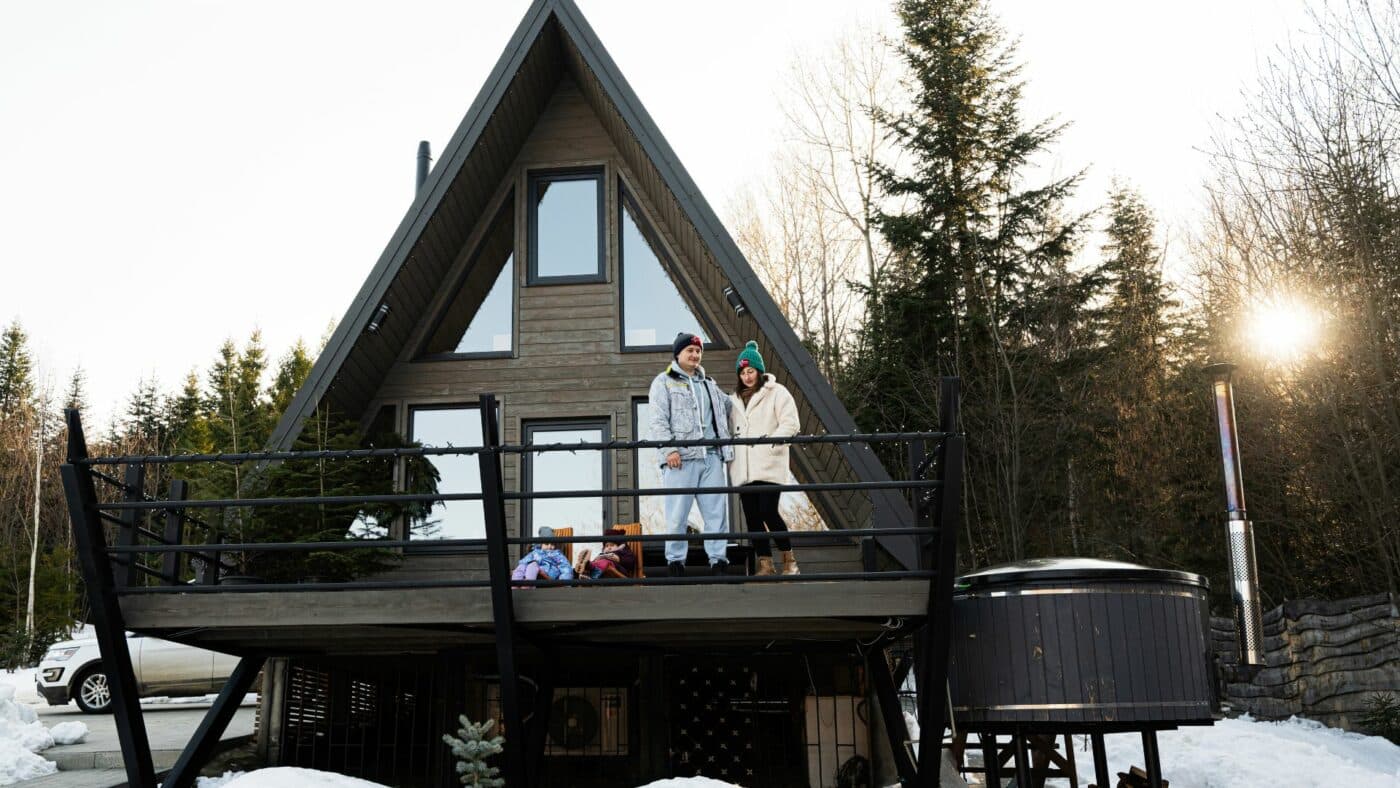
Can I live in a park model home in the winter?
In general, yes. However, if you live in an area with harsh weather (hello, sleet and hail), you may want to make some changes to your park model in order to ensure that you stay safe and warm.
Here are some things to consider:
- Add insulation to the roof, walls, and floors.
- Change your windows to storm windows.
- Ensure you have reliable access to water, electricity, and gas.
- Have an emergency kit prepared.
- Make sure that you have a quality heating system.
- Use an insulated or heated water hose. Some can withstand temperatures as low as -30 degrees Fahrenheit. Of course, keep in mind that this will up your electricity bill since they require a power source.
How to winterize a park model home
It can be confusing to figure our how to winterize your park model home. But thankfully, we have outlined several tips to make this a smooth, stress-free process. Simply do the following:
- Winterize the pipes
- Winterize the doors and windows
- Winterize the exterior
- Close entryways for rodents
- Watch for potential mold issues
- Reach out for help!
Okay, let’s dig into each point.

How can I winterize the pipes in my park model home?
Pro #1
Drain all water from sinks (including bathroom, kitchen, and mudroom sinks). Sometimes winterizing a park model home is not as difficult as it may sound.
Pro #2
Ensure that all faucets remain open.
Pro #3
Turn off water valves. No one wants to find their water pipes frozen and burst. By following these simple steps, you will be able to combat this problem.
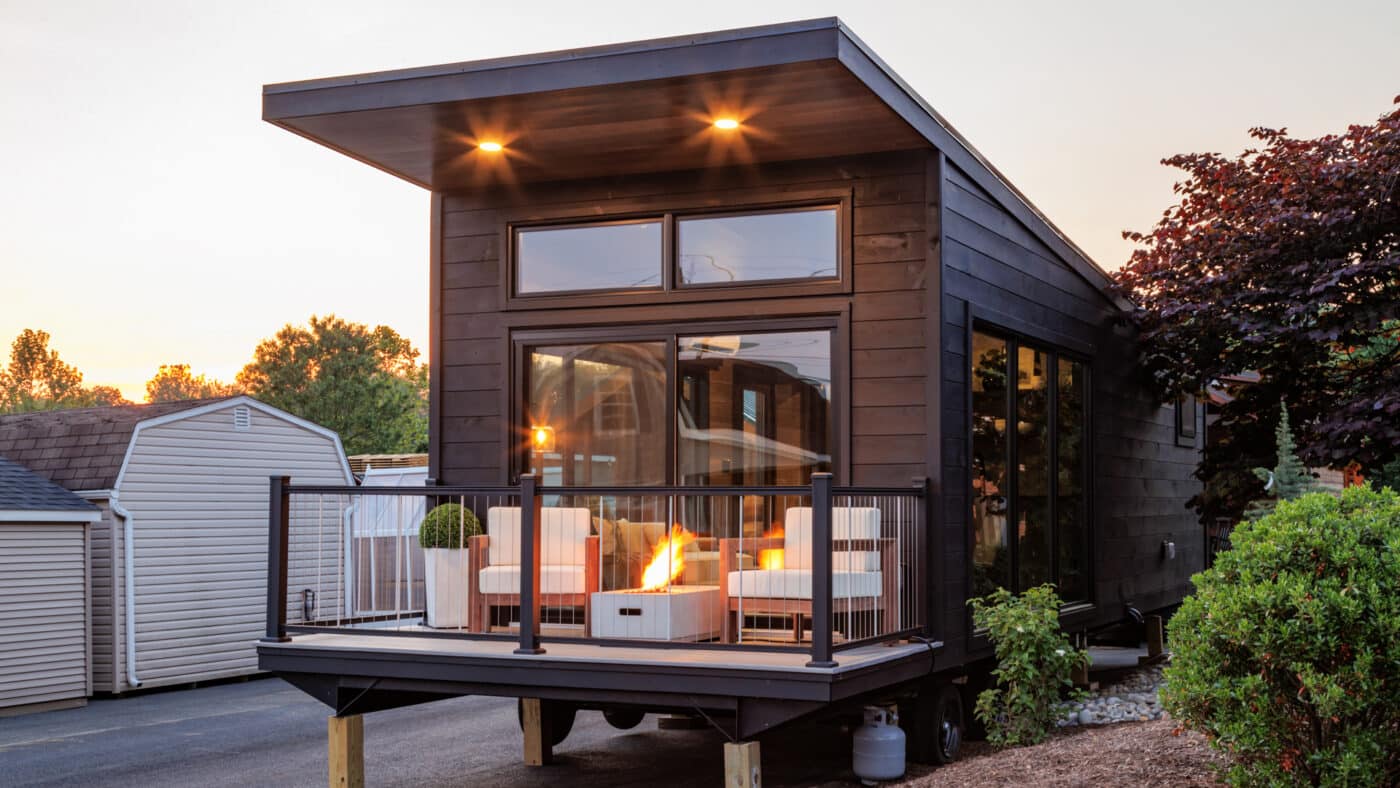
Pro #4
Turn on the furnace. The heat from the furnace will ensure that your pipes do not freeze during the winter months.
Pro #5
Make sure your park model stays warmer than 50 degrees inside. This way, your water lines won’t freeze, and your home materials won’t get damaged in the cold. If you’re going away during cold weather, plan ahead. That way, when you come back, everything will be in working order.
Pro #6
Protect water pipes with heating tape. If water pipes are exposed to cold temperatures either outdoors, underground or in a crawl space, you can protect them from freezing by wrapping them with heat tape. Heating tape is actually a cord or heat cable with encased electrical wire that when plugged in regulates the temperature around plastic or metal pipes.
Pro #7
Alternatively, you can use foam insulation, which you can easily find at most hardware stores. It’s a simple and effective way to add an extra layer of protection to your water line. First, open the foam and put the hose or water line inside. It’ll hold its shape, but you might want to use tape to secure it.
Depending on the climate around your area, you might want to wrap the hose with heat tape before covering it with foam insulation. This ensures constant heat and protects against freezing.
Remember to regularly check the heat tape to make sure it’s working. Most heat tapes have an indicator light to show that it’s functioning properly.
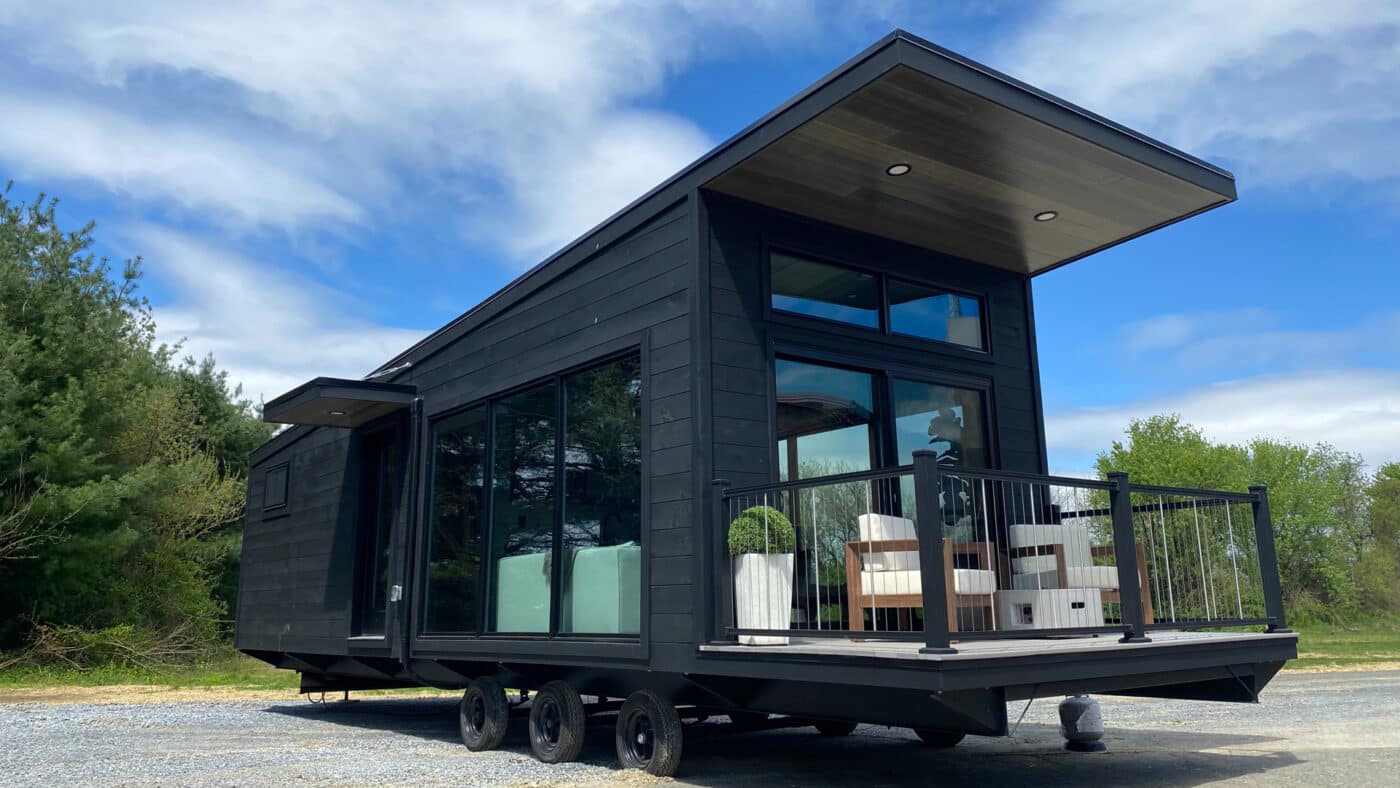
How can I winterize the windows and doors of my park model home?
- Add winter-rated windows and doors to your park model home. For example, low-E glass windows reflect heat back into your home, keeping the park model warmer, overall. Or another option is to…
- Invest in storm windows. This may not be completely necessary depending where you leave your park model home. However, if you plan to winterize your park model in a very snowy, icy area, storm windows may give added protection to your park model home.
- Close and lock all windows. If you’re leaving your park model home for the winter, then of course, you will want to ensure that all entrances and exits are safe and secure.
- Wrap the windows with plastic. Maybe you don’t have the budget to change out your windows, but with a simple solution such as plastic wrap, you can block out some of the cold. For a more detailed step-by-step guide to insulating your windows, watch this video.
- Use mortite caulking cord to cover any cracks on doors or windows. This will help to eliminate any stray draft from blowing into the interior of your park model home.
- Install weatherstripping to windows and doors. How can you know that your windows or doors will let a draft in before it’s winter? If you notice a ray of light peeking through cracks, that’s a sure sign that air movement will be flowing eventually. This video provides a tutorial on how to effectively weatherstrip your windows and doors.
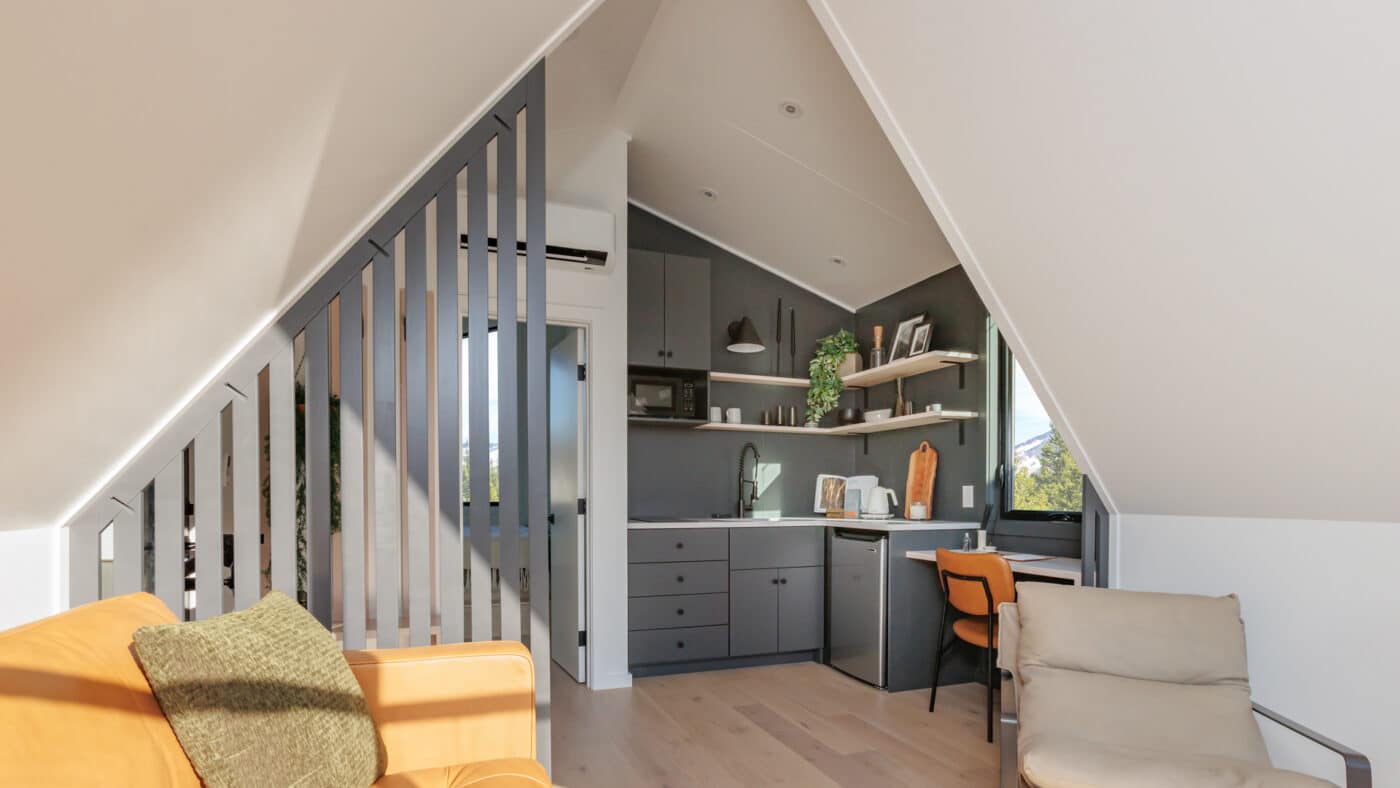
How to prep a park model home for winter: Keep rodents far, far away!
We get it. Rodents not only deteriorate the exterior and interior of a park model home, but they are unwanted guests that don’t come with conviction notices. But don’t fear! There are steps you can take now to ensure that your park model will not become a hostel for mice, rats, roaches, ect.
- Remove food from cabinets. Okay, moving on to the next steps…
- Clean out cabinets so there is no food residue. Just a quick wipe through all the cabinets will ensure that all crumbs are out of the way.
- Check for any holes or entryways for rodents. Walk through the park model and patch up any holes or cracks that mice and other rodents can sneak through. Steel wool is a great option for filling in those entryways.
- Leave mouse poisoning. Well, we both know that even our well thought out plans and actions can still be thwarted by rodents. For extra insurance, leave mouse poisoning around the park model to combat the pesky critters that penetrated your barriers.
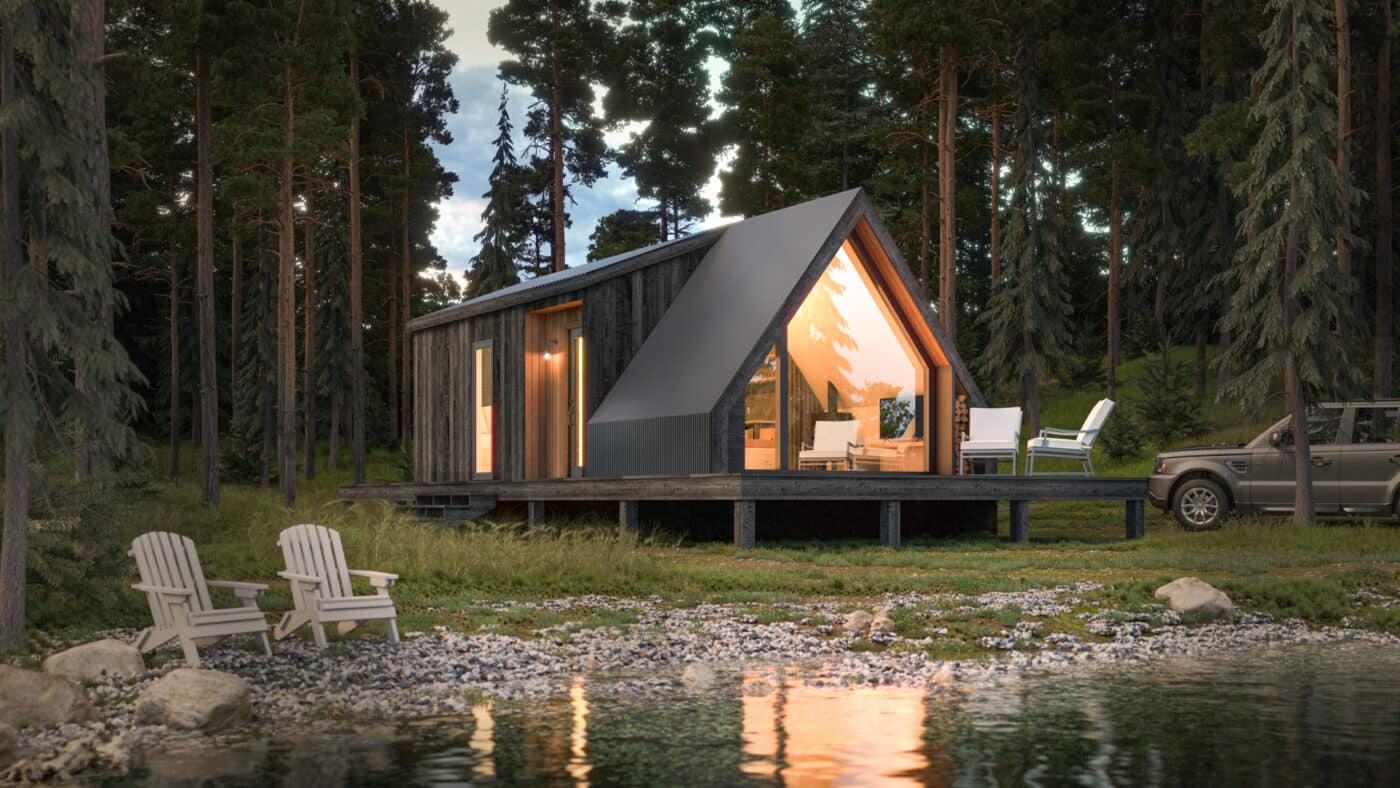
How can I prep the exterior of my park model for winter?
Sometimes it can be easy to just focus on the interior, but we can’t ignore the exterior of the park model when winterizing a park model home. It’s important to watch for trees with overhanging branches, poor roof quality, patio furniture, and gutter quality.
Pro #1
Cut down any overhanging branches. Strong winds could potentially blow these branches onto your park model home and cause damage.
Pro #2
Pay attention to the quality of your park model roof. Make sure that loose shingles are completely attached to the roof; harsh elements could potentially blow them across the property, causing further damage to neighboring buildings.
Pro #3
Store patio furniture in a safe, dry place. You’ve put money into this furniture; make sure it stays in optimal condition.
Pro #4
Remove any leaves or other debris from the gutters so that there is easy flow of liquid during the winter (i.e. snow, melted ice).
Pro #5
Another step to winterizing a park model home is completed by adding skirting. This provides an extra protection for your pipes and to keep unwanted animals out of the crawl space beneath your park model home. You can use hay bales, rigid foam insulation, plywood, canvas, concrete panels, or the same exterior siding. Really, the sky’s the limit! Some companies even offer custom-made skirting…let your imagination flow!
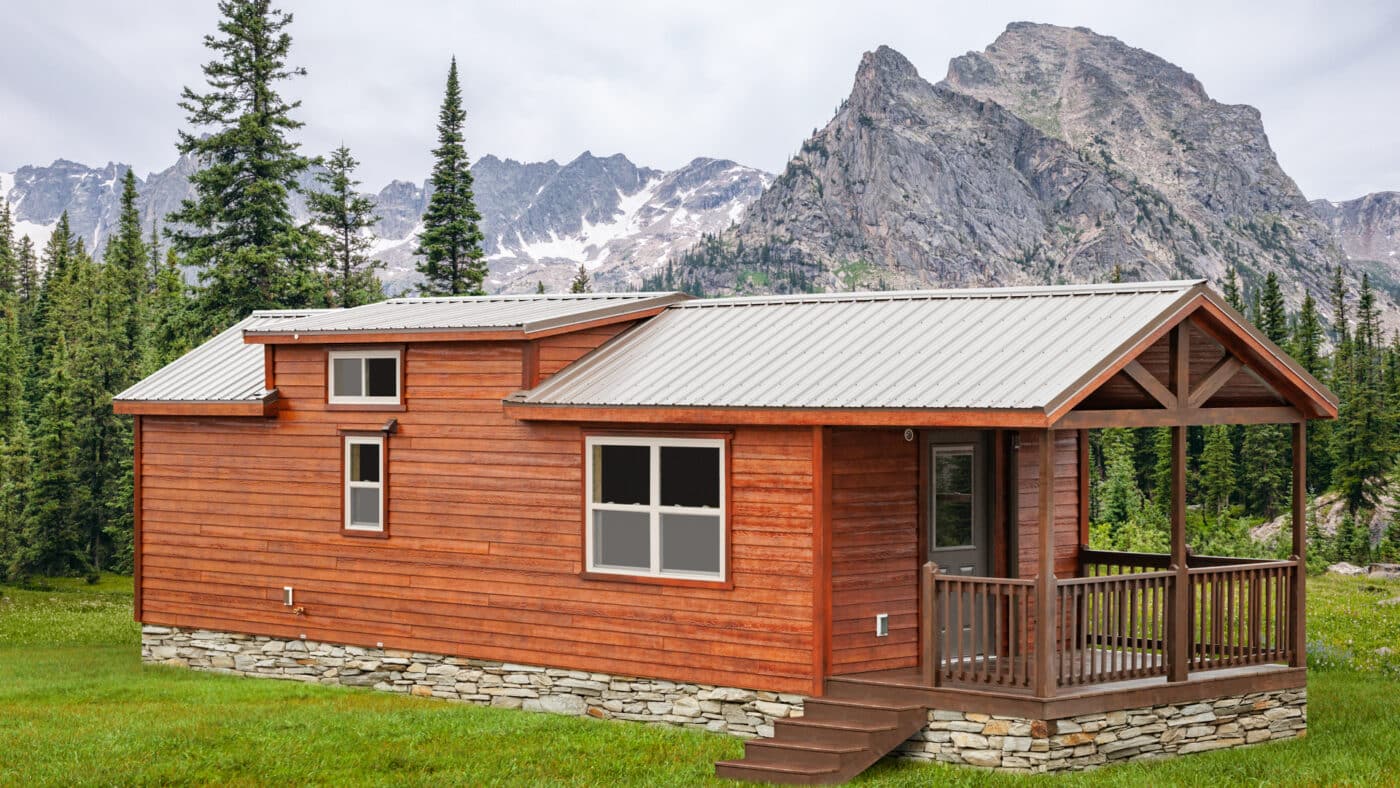
Winterize your park model by taking control of mold issues
Take the following easy steps to prevent mold issues: dry everything, defrost the freezer, and use a dehumidifier.
- Dry all exteriors. It’s important that you have all moisture and liquid cleared out of the way so that there’s no opportunity for mold or mildew to build up.
- Defrost the freezer. First, empty the fridge of all food items and wipe it out. Then, it’s a solid idea to defrost the freezer.
- Add a dehumidifier. Finally, eliminate any extra moisture build-up with a dehumidifier.
Winterizing your park model home is not all on you
Are you feeling stressed out by the amount of things to consider and do? Please don’t! You are surrounded by people who would love to help you fully winterize your park model home.
Reach out to the park model community, ensure your insurance and title is current, and consider hiring a professional winterizer.
- Remember the park model community. If you are living on a campground, you could reach out to your neighbors or the campground faculty with any questions. Additionally, forums like Reddit or Quora offer many answers to commonly asked questions about tiny living.
- Ensure your insurance and title is current. Hopefully, no catastrophe will overtake your park model home. But it’s always good to know that you have insurance in case of an emergency.
- Hire a professional winterizer. Maybe you’re looking to save money, but really a professional can ease your stress and ensure this winter goes smoothly. What a relief!
Winterizing Items:
- Snow Shovels
- Car Tires
- Antifreeze Solution
- Steel Wool
- Mortite Caulking Cord
- Heat tape for pipes
- Skirting
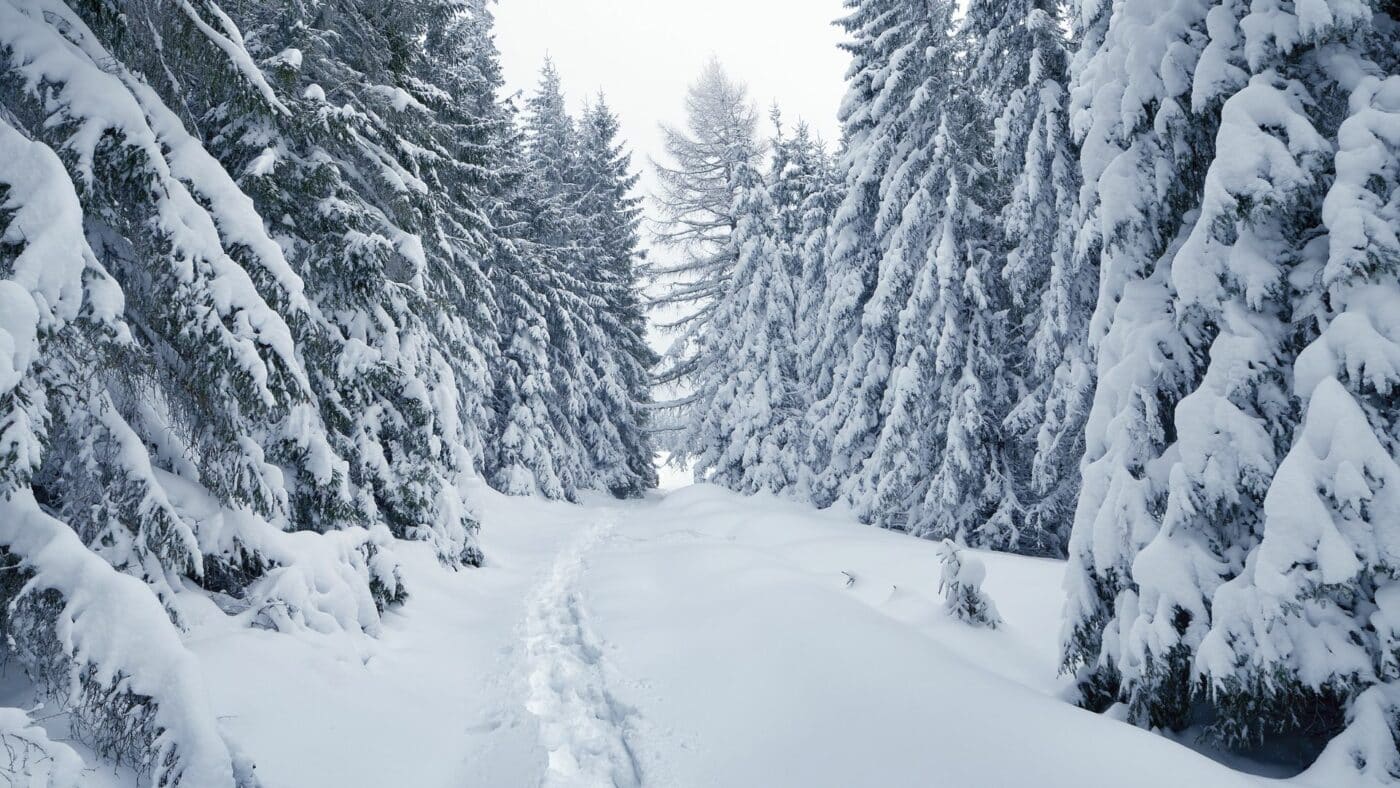
Is winter hard on my park model home?
In short, yes. There are many ways that winter can affect the structure of your park model home. For quick reference remember the following areas:
- Excess Moisture
- Mold
- Pipes
- Roof
If your park model is not sealed off adequately, snow and ice can lead to mold, mildew, and in more severe cases, your park model might start to rot out. Additionally, if your pipes freeze during the winter months, they will burst and cause damage to the structure of your park model (not to mention your belongings). Ensure your roof is designed to withstand large amounts of snow or ice (if relevant), or else the roof may sag or even collapse under the weight.
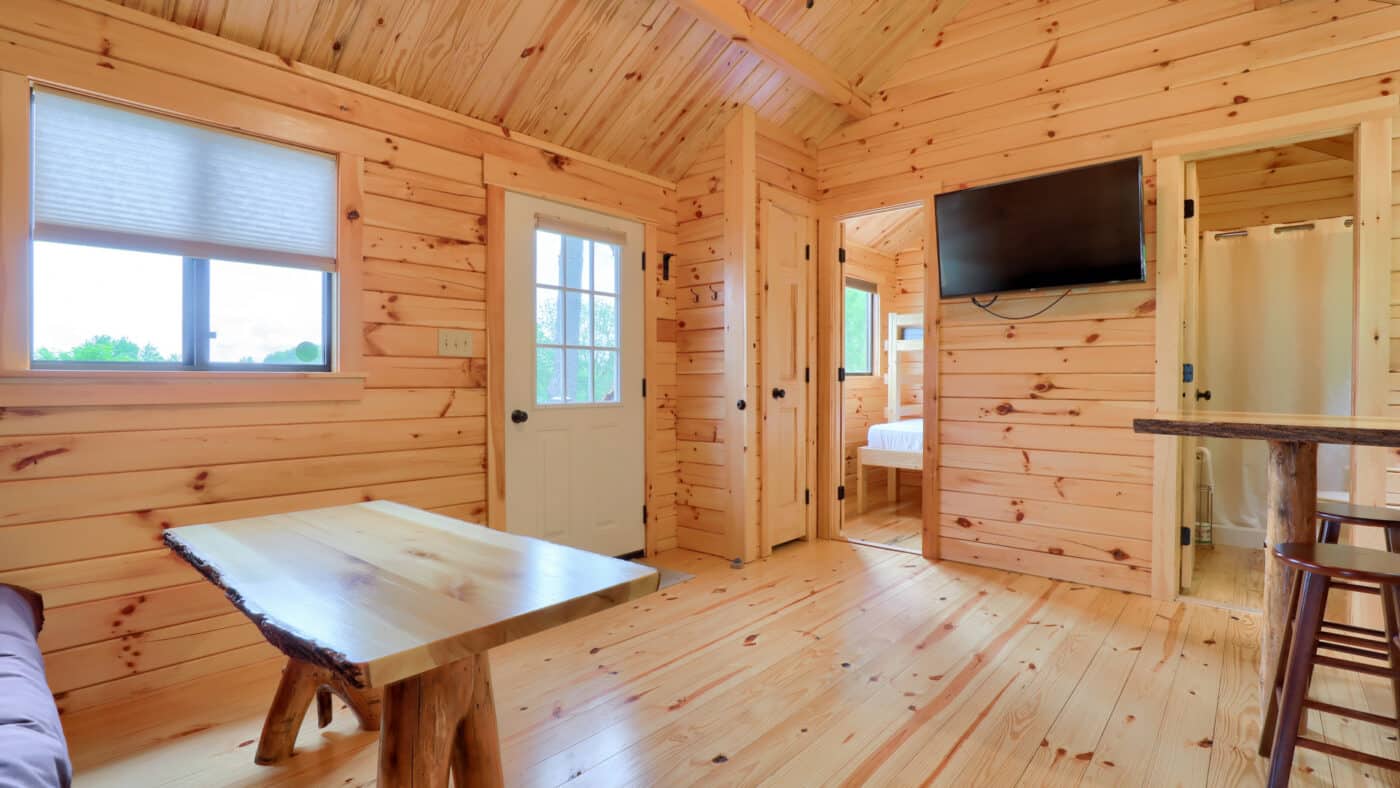
Find a Contractor to Winterize Your Park Model Home
It can be tempting to save some extra cash. After all, the holidays are around the corner and we know how the bills can stock-pile faster than lose change. But, the truth remains: some things are worth the cost. Yup, you guessed it! Finding a professional contractor who knows exactly how to winterize a park model home can potentially save you a huge headache.
No one wants to find that their beloved park model has been ruined by the elements, mold, or other winter aspects. So, we have listed a few contractors who winterize RV homes and some suggestions to get you started.
| Company | Price | Number | Location | Keep in mind… |
| Hitch RV | $108.99 | Hitch RV New Jersey(856) 629-7400Hitch RV Delaware(302) 751-1375Hitch RV Columbia(803) 776-3752Hitch RV Boyertown(484) 415-7631 | See last column. | Owners must provide their own:Non-toxic RV antifreezeHand tools to remove drain plugsWater pump converter kit |
| Frentz RV | N/A | (800) 673-7389 | Souderton, PA | More information and details can be found by calling the number. |
| Campgrounds | Roughly$100 | See your local campground | Local | Some campgrounds provide winterizing services. You can contact your local campground to find easy servicing. |
*All prices are subject to change.
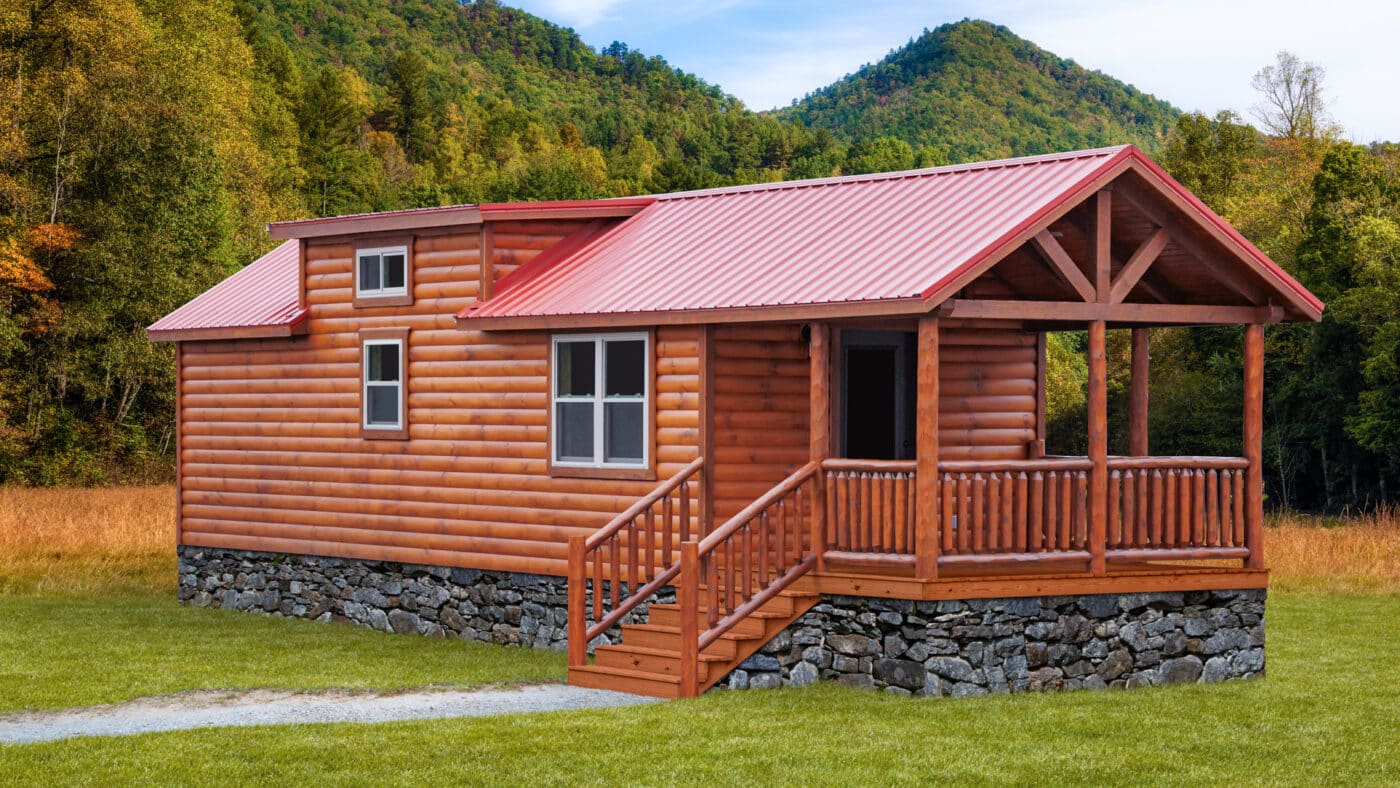
Summary
Whoof, that was a lot of information. And hopefully, now you know how to winterize a park model home before winter delivers mounds of snow, ice, and frozen pipes.
And if you find yourself starving for more information, check out our articles on park model camper life, campground park models, or best park model homes.
